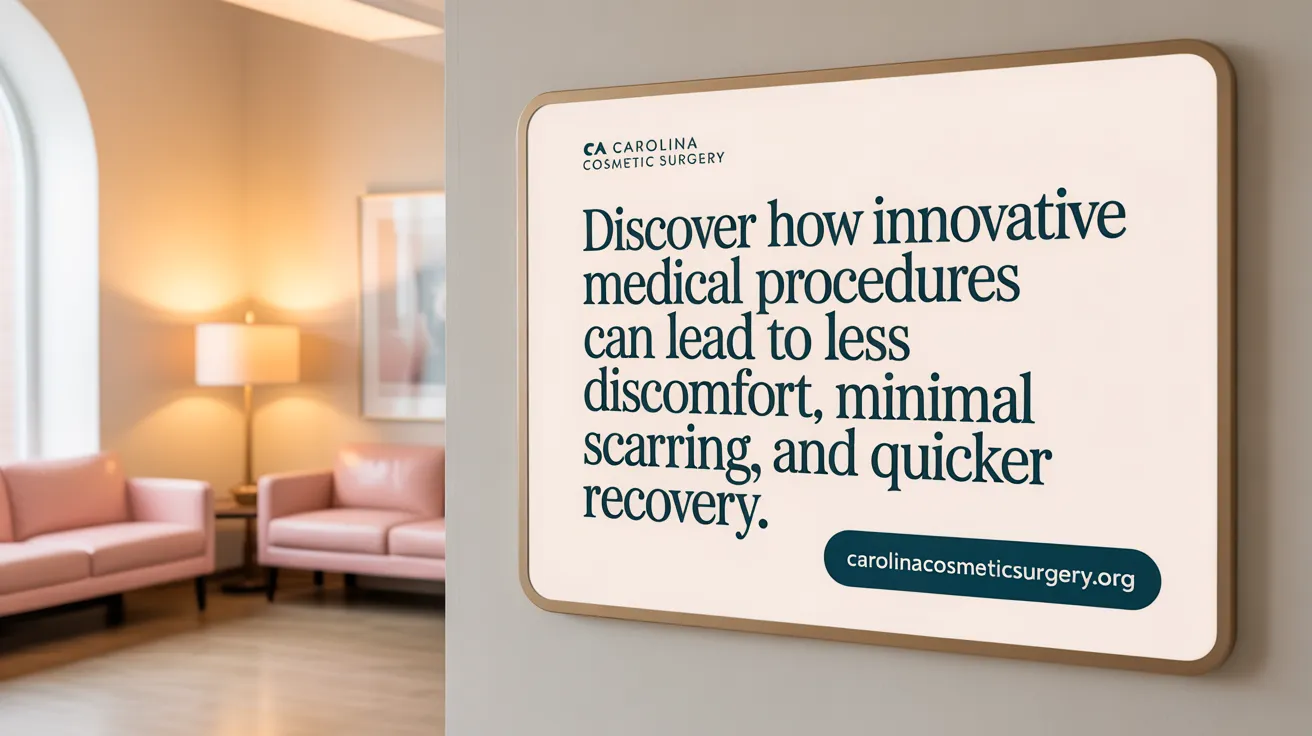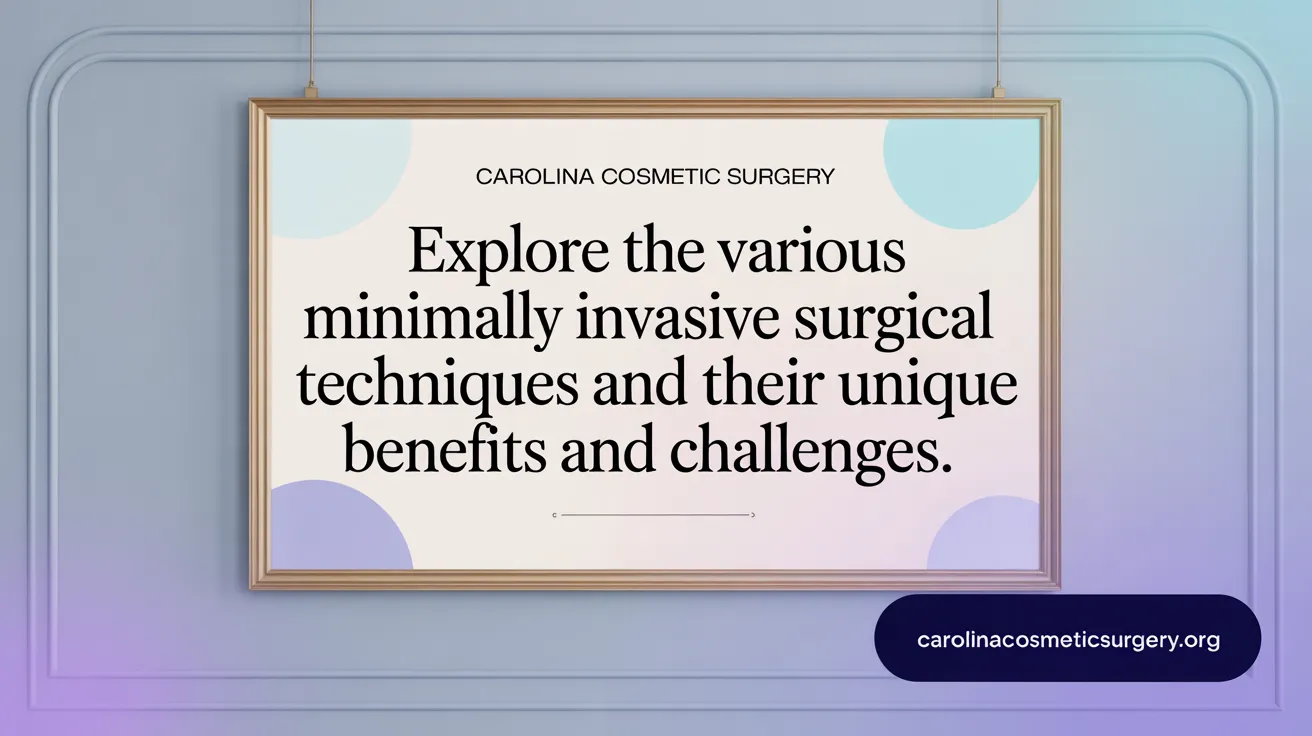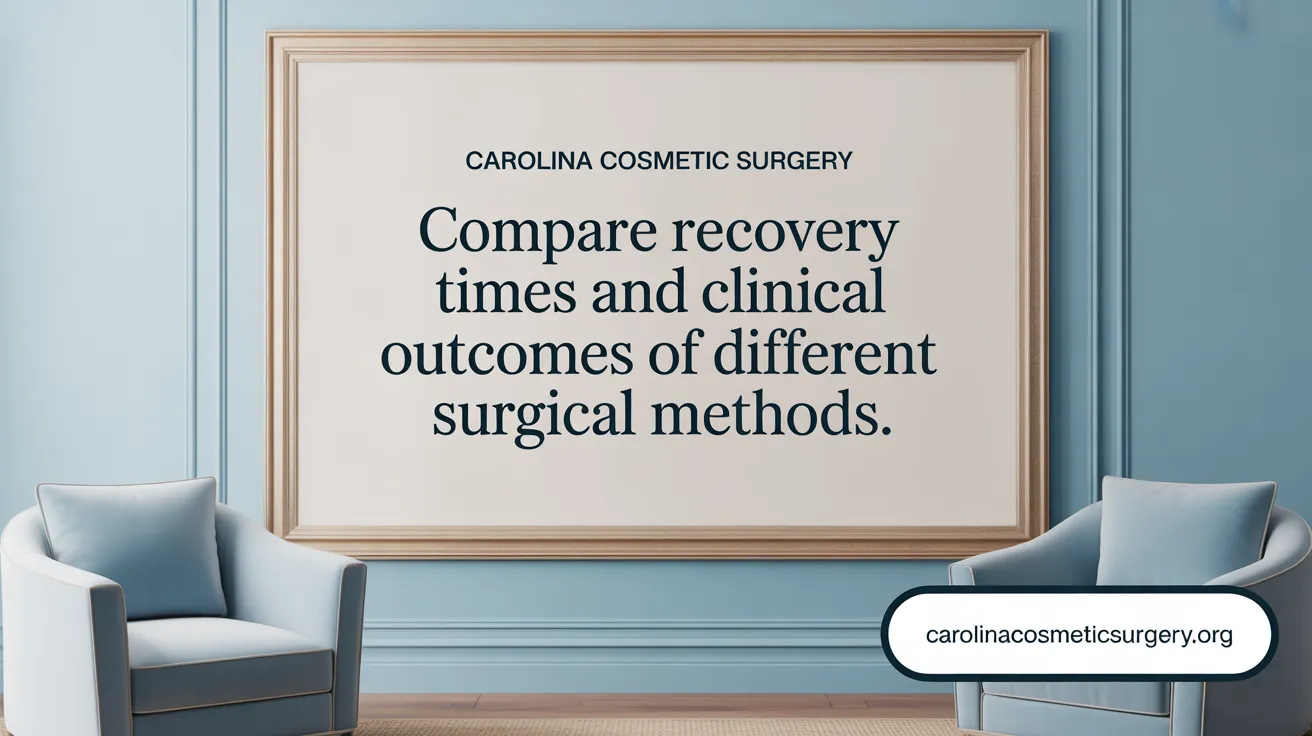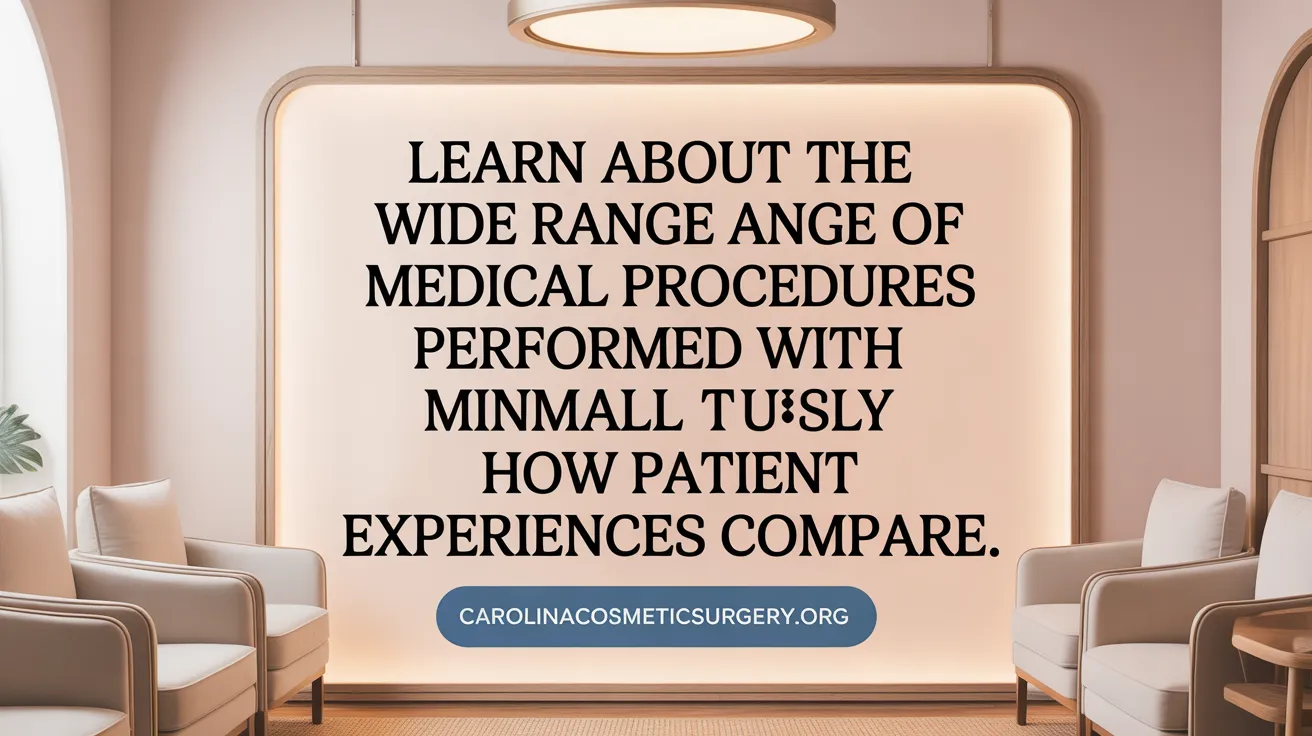Understanding Minimally Invasive Procedures
Minimally invasive body procedures have revolutionized modern surgery by offering alternatives to traditional open surgeries that significantly reduce trauma and recovery time. These innovative techniques employ small incisions, advanced instrumentation, and cutting-edge technologies such as laparoscopy, robotic systems, and endoscopy, allowing surgeons to perform complex operations with enhanced precision and less physical disruption. This article delves into the pros and cons of minimally invasive procedures, exploring their types, benefits, risks, suitable medical conditions, recovery outcomes, and how they compare with conventional surgical methods to help readers make informed decisions about their healthcare options.
<!-- VIDEO:eyJsaW5rIjoiaHR0cHM6Ly93d3cueW91dHViZS5jb20vd2F0Y2g/dj1Fc1pyaVBwVmRiTSIsImltYWdlVXJsIjoiZGF0YTppbWFnZS9qcGVnO2Jhc2U2NCwvOWovNEFBUVNrWkpSZ0FCQVFBQUFRQUJBQUQvMndDRUFBa0dCd2dIQmdrSUJ3Z0tDZ2tMRFJZUERRd01EUnNVRlJBV0lCMGlJaUFkSHg4a0tEUXNKQ1l4Sng4ZkxUMHRNVFUzT2pvNkl5cy9SRDg0UXpRNU9qY0JDZ29LRFF3TkdnOFBHamNsSHlVM056YzNOemMzTnpjM056YzNOemMzTnpjM056YzNOemMzTnpjM056YzNOemMzTnpjM056YzNOemMzTnpjM056YzNOLy9BQUJFSUFGTUFsQU1CRVFBQ0VRRURFUUgveEFBY0FBQUJCUUVCQVFBQUFBQUFBQUFBQUFBQ0FBRURCQVVHQndqL3hBQTlFQUFDQVFNREFRVUZCUWNCQ1FBQUFBQUJBZ01BQkJFRkVpRXhCaE5CVVdFaU1uR0JrUWNVRlVLaEkxSmljb0t4d1pJa00wTlRZNkxSNGZIL3hBQVpBUUFEQVFFQkFBQUFBQUFBQUFBQUFBQUFBUUlFQXdYL3hBQXdFUUFDQWdFQkJBZ0hBUUVCQVFBQUFBQUFBUUlSQXlFRUVqSHdFMEZSWVlHaHNkRVVJakp4a2NIaDhVSTBCZi9hQUF3REFRQUNFUU1SQUQ4QTllcnVad2NxRGdzdVFjRVo4K2xKZ1BzcEJRdGxJS0ZzOUtZVUxiVHNLRnRwZ0xHS0FIRk1CeFFBNE5JWVFOU3hoZzBpaDkxSVl0MUFnR2FtaE1oa3FrUXl2SU9LcEhPU0s1WG11bG5JMEZJcmthNk9FdkxMVmZ4cllMQkpZZHNxTklZNWN1OGpiZytSN1BHMU9jamJ0SUdLcTFSRk96ckxuVDd4cGU4am5rWWQzR3JwOTRkQTVCTy9HT0Z6N1BJSGdlbWMxenNxaXNtbDZ1UDJrdDgwcDNMbUZabmpERFlCNzQ2ZTBDZUFNNU9mSUc4dXdLWVg0ZnJHUGJ1eEkyMENSeE15aVlia0pBVUQ5bWNCeHVIUFAwTFFVdzV0T3ZzaDRwWk1FSnVpTjVKemhXQkFiR1I3VzA1eHpqNmxoUldPbTYwb1ltL1dSeVFmOTQ2QW5ucUI0ZERoZHZybnhxMEttYmdWVVVLZ0FVREFBOEtCMEttQWhRQTROSVlRTklaU3V0WXNyV1h1WG0zei93REppVXlQOUZ5YTZSd3prclMwL0J5bm54d2RONjlpMVl3MUs2Zm1MUnRRWmZOZ2lmb1d6VDZLQzR6WG43RTlQUHF4dnk5eEhWREdNM1ZoZTI0L2VhSGNCODFKbzZEZSttU2ZqN2g4UlgxeGE4TDlMTEVGMUJkUjk1YlNwSXZtcHppdWNvU2c2a3FPc0p4bXJpN0Nha0RJMkZVUXlJclRzNTBXRU5TYVJOZDI4VXF4U1NnT3d5RndmSHA5Y2NlZEpSazFhUkx5UWk2YkxLU0l3QkREcG5CNjFOTXROTWN5eHF3QllaSnh4ei84NlVxWXJRTTg4VUVKbWxjTEdCa3RUU2JkSUpTVVZiR3VKNHJlR1NhYVJWampHWFk5RitOT01XM1NGS1VZcmViMFJEOTd0ekswUWxVdXBHNERuYmtFalB5QnF0MlZYUlBTUnVyR2FhTE9ONjR3RG5QSGo0L0tuVEh2SytJdThUZ0IxSlBUbnJSUTdRczBoaUxBS1dZZ0Fja253b0F5cmNYWGFKeWJlV1MxMG9ISGZKeEpjK2UwL2xYMTZtdXNuSER4MWw1TCttZGIyZmc2ajV2N2R3UGErUTlsdXlWeTNaKzJqaXVwSGpnaFlEM1hrWUtIWStPTTU1ckxseXlsODAyYXNXR01QbGdxT0FoN0U5b0Z0ZnhGKzJXcS9leUEyNVpIeHUrYmNqMHhXRjdTK0tSNksyVlh1dG5wM1lyV1pOYjBOWmJveC9mYmVSN2E2N3ZwM2lIcmp3eUNyWThOMWFvdmVWbU9jZDJUUmExRFJiZTRZM0VERzF1eDBuaUdDZjVoMFlmR3RPUGFKUVc2OVk5ajUwTW1UWm95ZTlIU1hhdWRTaGEzVXd1RFk2Z2l4M2lMdUczM1psL2VYL0k4SzZ6aEhkMzRmVDZkek9lUExMZTZQSnBMeWZlaTVqTmNqcTBOdHBrMFJ4djYwTkhVQnJWWnJ1UXBjTWp2R3F5eHFBY3FDMlBoMU5QZXFPcU9UeHFVMjA5ZEw4d1YwT0hhQWtqS2MrMFFneXd3Z3gvMkQ5YWJ6dm5udklXeXg2bnpwN0VVT2g3V2tFc3V6ZmxZdTdYY1NNSGxqZ2M4bi96VGxuMFZJaU96VTNiNDg2azdhUEJQWVc4S3pzWTRnMjF5b09RM1BqK2hxVm1rcHQ5cGZ3OFhDS1QwVmlYVExhQ09lMU0rRGVNU054OW84bGlCNTlUUThzcE5TcmdDd3dpbkJ2NnY5SVc3UHdiWEhmUzRZYlRuR2ZkZFI5QStQNlJWcmFIMmM2ZXhQd2NkZGVkZmZ5R20wRzNrTDVkd3JidlpBR0JudlBUL0FLaCtncHJQSmMvYjJDV3h3ZlgyL3YzSEdrUkpQRk1zamp1bkxoQUJqSk9mODB1bWJUWGFYOE1sSk8rQmZOY2p1WkdxSzJxNmpiNkhHeEVVaTk5ZXNwd1JDRGdML1VlUGdEWGFENk9MeStDKy93RERobFhTU1dMcTR2N2YwNnFLTklvMWpqVUtpakNxQmdBZVZZcnZWbXRKSlVqRDdjeE5QMmRuUUFiZThpWmlSbmFBNm5QeXdLNTVXMUYwZGNLVG1yUE9YYXppdC93cTgxMi9lVjJXZnZ3MkZRWVBzNTZBY2REeldOYnorWkk5T2x3czdQN09yUDdvdXBtRm1OdkpPakF0K2FRSUZZL1FMV25BNU5hbUhhVkJTK1U3S3U1bU16WHROTi9hYm9HQ1hjQjd5M2Z5Y2VId1BRMTN3WmVqbDgzQjhUUHRPSHBJWEg2bHF2dVZ0THVsdjdHRzVWU3U5ZmFVL2xZY0VmSTVxc3NIam00c25Ga1dYR3BGdlo2VnpzdWpPZ05kcEFpSzYwNksvdUpBMHlodTdVR1BibkF4SUFldm14LzAwNDVYQkxUblE0Wk1NY3NucnpyNytRVStnOStrcXJkRmU4WUVaanp0NFBUbnJ1WXRta3RvM1d0T2VkQ1piSnZKcmU0OCt1b3BOSmlFMGtUWHF4dk1XY0p0dzN0Qmx6MXllVy9USEZMcG5TZTd3RzhDdHB5NDYvcjloUjZHa2R3ajkralNvQ1ZReGV5QWU5eUFNKzcrMUF4NUlCOEI1N2pWYzZlZW5tS095SlNUdlgvZFB0ODNraXpkYWQ5NHU0Ymt6bFRDQUVVSU1kZmF6OFJnY1krZFJISnV4Y2E0bmFlSGZtcFh3NWY1S1g0RGp1UUxrL3NpZVdqeWZJYzUvZEFYMXhYWHArT2h5K0U0VStIUHBvREZvOFlaVEZjSVZqSlhDcDdod29PM24yVzQ1UHJROHo2MEVkbGoxUGgzZW5lSzEwY1d6MnppWmN3RTlFOTdQbGtuSHIvaW5MTnZYM2poc3U1dXUrQk5ZMmYzYTR1NURqOXJJZGdCenRYSlA2c3puNWlwblBlU1haejZVWGh4YmtwUHRmbC9yYkI3Skw5NHZ0YTFBKzg5NTkzWCtTSUFmM0xVdG8wVUlkMS9rckFybE9mZlg0T2xyS2FUQTdWOXFOQTBDeVlhNWV4UnBNQ2doSHRPNDZIQ2puSFBYb00wQWp4aTBuMWEzTWtNZHRhU3R1ZlpPN2xTd09jYjFBOW9qUEZZMXVub3B6M2FQUnV4WGFuUU5JMCsyMERVZFVpZzFLSVprTnlkZ2taaVRrTWVQRWNFNXJSamFjZERGbFRVNlozVnJkVzkzSDNsclBGTW1jYm9uREQ2aXVoekpUeUtBT2QwdGZ1K3I2dlpnZXdzeXpvUEx2RnlmMUJyWmwrYkhqbjNWK0REZytYTGt4OTkvbitteUJ4V1kxR1BBdGQyUWlLNTB1VzR2R3VJcm51ZDBRanlvTzRZRGp6L0FJd2Y2YXFPVlJqdXRYeXZZejVObmNzbStwVnBYcjdpR2pUTEhrMzd4N1VJM2duMlJpVE9PZjR3ZjZmb3VuamYwODZlM21MNGFWZlh6cjczNEJ3NlNJMTc0WG9CVlZEeTU2Qlhaano0RDJzWThNVW5sdlN1YW9jZG4zZm0zdVUyeDEwZWRZRlEzS25BR1Z3KzErVlBQdFo1eDRlZmp6a2VaWGRlZzFzMDFHcjlhOVNXMDAyZTNhVXZldkp2aEVlNGc3dHdVRGQxNjhaK2ZHT2N6TEpHVlV1dmxGd3d5aGZ6WHB5K2ZjZ3Q5SmxnTUxQZHN4aTJueDV3eEo4ZkVHcmVWTzFSTU5ubEdtNWNCZmg4cHU0N2lPNlh1aEswdTFSN3dZNXhuTkhTTGRjV2g5QkxmVWxMUzdOQW11WnBBSm9BcDloeml4MUdQODBlcFhBUHpiSS9RaXEycjZvdnVSeTJaL0xKZDdPRSsyL3RnOXNZK3p0aEswYnNvbHZKRVlnN2Z5b0NQUHFmVEhuV1kwSGpNY0VlU1VWVkI4QlFJOUI3TWRydExzK3pFNmFwQWttcTZldTJ5TEUvN1FwNFFIK1h4L2hBOGF6Wk1MYzdYV2FjZWR4alQ2amhib3kzTXp6M0R0Sk5JeFozYnF4OGEwcFZvak8zZXJMdlpEWDV1eTJ2UTZqWmZrT0pvaHdKVVBWVC9jZVJBTkFqNm8wNjlnMUd3dHI2MGZmQmNSTExHM21yRElvR1k5dWQzYWpWV0hSWVlFUHh3eC9zUld5WC9uaDkzK2pGQjN0T1Q3TDltc0R4V1kwbWZHbUs2dGlvcTN1blhGemNQSkZkUEdwUUtGV1Ixd2NQemdlcklmNmF1R1dNVlRWOHIrbWJMZ25PZThwVjR2djkxK0FMalNiK1pMbERlTXdtWThHVmdDQ0dHT0J4amNPQWNIYnpUam14cHA3dkQrYytKRTlueXlVbHZjZTk5L1BlU3phWGZzSlFsNWpla2lvZTljZDJUdndjRHI3eTllbTNpcFdXR2xycy9YUGlPZURJMDZseFQ2MzEzejNWb0JjYVhxREpPSXIwZ3l1eHlacEJ0RzV5dU1kTUJsSHJ0eDVHaU9hQ3E0OFB0M2V6L0lTMmZMVDNaY2U5OXJyMVg0Sjcrd3VibVVPdDA2QVJxcEN5dXZPR3llRDZyOUtVTWtZcXE1ME9tVERLYnZlODJ1M3NLMG1uM3pHVGRkbGcyTWp2bkcvcHh4N3VPbkhYeHFsa2d1cjA1NTBJZURKcmN2TjhydzRrVUdtWGNSVlh1Mk1haU1ZV1ZsR0YyNUdCMDZIb2VjODFjc3NYMWRvb2JQa1dtOXBwMXZxcm54QS9ENzhSeHF0NlNReXN6R1Y4NUFHZmtjSGpwelQ2U0Y4UFFQaDhxU1NsMmRiNThPQnFrODFuTnBuNkxKK0g5cUx5MGM3WXRSUVhFT2YzMUcxeDlOcHJwbFcvaFV1elQyT0dON21aeGY4QTFyN256cjIyMUQ4WTdVNnZxQ3NkczF5KzBIbjJWOWxmMFVWa05KaVdWeHRVaGpqeW9BbWxmT0pZK2R2VmZTZ0M2ZTBGN0RaMjl0Yno3RWpWaUJzVTdXTE1Uakk4c0g1MWFuSktyMEZ1cTdNKzNjM0R2Tk1RV0pxV3huMGI5aldycGRkaFVqbGNEOFBrZUoyUFRiNzRQeURZK1ZKSnQwZ2JTVnMydXorNldHNDFDUlNHdnBqTUFlb1RvZy8wajlhMjdSU2F4ci9sVjQ5WmgyUzVSZVYvOU8vRHE4alczVm5vMDJRb3RVeGtxbitFMUlXS1dkSUl6Sk1SR2c2czdBQWVGS2dzWjd1T05WWjNSVmM0VWwxQUp3VzQ1NTRCUHdCb29MZllOOTR5Rks0SWZsU0dIUEdmUHlvcEN0OWhHYm9HUjRodE1pZTh1OFpYeDU1cXFRdDU5Z1BmRmh3dWZnUlJTSGI3QVM3RVoybjYxVkR0OWdPOC91bWloMk1HeWVsQUZQVjdCciszWHVKTzV1NEhFdHZLUHlPUFAwUFFpcmhQZGV2QjhUbmx4dWEwNHJnZWY2ajJiMExVYldTM09oSkJxZ3lHamhKalpHd1QrWGdqak9hODNKaXpZTWlqZHhmQjg5WnV4Wk1PYkcyMVVseFhQVWVFZzRPYzEzT0pNa3NrUkVpOURURURKTDNtZHE0OGNlVkZqUFJmc2hzYldlTzZ1Ym5UWUxwb3AwUlpKVjNGQ3dKd0FlQjdwNXJMdExrbGFacDJaUmN0VnFlczZmRkpmdmNXTnVObW51eW01Y2NaeC93MStQajZWdDJISExCRHBjbkY4RiszK2pEL0FQUnl4Mm5KME9QNlY5VC9BRXYyZFR3cWhWQUFBd0FQQ3FKMFhBRXZWRTJTTFNMSWJDQzZpbGxhNXVPOFJ2Y1g5M2srUHdJSHl6NDFER2lYVVVWN0dYZWpzRUFrQWpPR0pVaGhqMXlCU0JuTkc3ME5yVkxKcmE0KzZ4Rjdqa2xRdnM1NFBqbFhQajZWV3ZFV2pGTkRvVmhPNnp3WENiblNRTVpkNUxGZU9NOUFHNmVuVEFHV25KaTBITGFIZFNtRnJlNjNTTWRxbnF4aWpBODg5Rng2a2V0Q3NlaFdrR2hvWGxsU2RBMlhLcElDaElPVHRZSHlJNC85MDFZdERvclNHSzNzNFlyZFNzU29Ob1BKQW9MUVJwakFKNW9BY056UUJVMVBTcmZVZHNoWjRMbEFSSGNSSERxRDRlbzlLcU9SeFZQVmRoeW5pVW5hMGZhanhydEI5ajJwVzBqU2FSSXM4ZmdwNXgvbjlEOGFieFlwL1JLdTUrNUt5Wm9mWEcrOWV4ekVuWXJ0SGJOdEdtU0J1aEFZQlQ4bXhVdlpNdlZUOFVOYlhpNjdYZ3kxWS9adjJqMUIxQXNVdDE4U2NuKzNGUDRXUytwcGVJdmk0dlNDYjhQYzlWN0MvWi9MMmZzcG9idStkbHVIVjVVVEFKSUJBNThPcDhUVHJEQnB4VzgxMjhQeDdrM255SnFUM1YyTGorZXJ3Tzhoaml0b1VoZ2pXT05CaFZVY0NvazVTbHZTZXBjWXhoSGRpcVE1ZWloTmtaYXFvbXk2dFFkUXdvUGhVMk9oKzdYeXBXT2hkeXBGRmkzVUNZUjVuNjBid2JoRzBJODIrdFBlRGNJMmlIbWZyVDNocUJFeUFWVmozUUNBS0xDa0J3T2xNS0ZtaWdIRDBVQVlreDQwcUN3aE42MHQwVmpHYnpOUGRFMkNaYWU2UzJDWmFkRXRnOTVUbzV0amJxWk5tbXRjalFTTFVGaDBoaERwUUFMVURJMm9BaWVxR2lCK3ROQ1pFMVVCR2FZQUdxRUNTYVloaVQ1MENHTEh6cGtEYmpqclRRbUxKODZDV0xKelJSTEhCb1pBOUlsbi85az0iLCJ0aXRsZSI6Ik1pbmltYWxseSBJbnZhc2l2ZSBTdXJnZXJ5OiBBZHZhbmNlcyBhbmQgQmVuZWZpdHMgaW4gTW9kZXJuIC4uLiIsInNuaXBwZXQiOiJNaW5pbWFsbHkgSW52YXNpdmUgU3VyZ2VyeSBpbnZvbHZlcyBwZXJmb3JtaW5nIHN1cmdpY2FsIHByb2NlZHVyZXMgdGhyb3VnaCBzbWFsbCBpbmNpc2lvbnMsIG1pbmltaXppbmcgZGFtYWdlIHRvIHRoZSBib2R5IGFuZCBhbGxvd2luZyBmb3IgLi4uIn0= -->What Are Minimally Invasive Body Procedures and How Do They Work?
What are minimally invasive body procedures and how do they work?
Minimally invasive body procedures are surgical techniques designed to achieve treatment goals through small incisions, typically less than half an inch long, instead of large cuts used in traditional surgery. This approach aims to reduce trauma to muscles, nerves, and organs, resulting in less pain, bleeding, and a lower risk of infection.
These procedures utilize specialized instruments—such as endoscopes, catheters, trocars, and robotic systems—and advanced technology to visualize and operate inside the body. For example, surgeons may use a tiny camera attached to an endoscope or a high-definition robotic arm controlled from a console. Sometimes, gas like carbon dioxide is used to expand the space within the body cavity, providing better visualization and access.
The core principle is to perform complex surgeries by making minimal cuts, which leads to shorter hospital stays, quicker recovery times, and better cosmetic results. This method is applied across numerous fields, including cardiology, neurosurgery, gynecology, general surgery, and orthopedics. It allows procedures such as gallbladder removal, hernia repairs, cardiac valve repairs, spinal surgeries, and even cosmetic body sculpting.
Overall, minimally invasive surgeries work by combining smaller incisions with high-precision instruments and imaging technology. This synergy reduces physical trauma, enhances surgical accuracy, and facilitates faster healing, making treatments safer and more comfortable for patients.
Benefits and Advantages of Minimally Invasive Surgeries

What are the benefits and advantages of minimally invasive surgeries?
Minimally invasive surgeries provide a range of significant benefits for patients. One of the most notable advantages is the reduction in postoperative pain, as smaller incisions cause less trauma to muscles, nerves, and tissues. This results in a more comfortable recovery process and often less need for pain medication.
Scarring is minimal with incisions typically less than half an inch long, leading to better cosmetic outcomes. Additionally, these procedures involve less blood loss, further promoting quicker healing. Patients undergoing minimally invasive surgery usually experience shorter hospital stays—sometimes being discharged on the same day—and can return to their normal activities more rapidly.
The lowered risk of complications, such as infections and internal scarring, is another major benefit. Enhanced visualization and surgical precision, achieved through advanced tools like laproscopes and robotic systems, enable surgeons to perform complex procedures with high accuracy.
In some cases, minimally invasive techniques allow patients to be awake during parts of the procedure, reducing risks associated with general anesthesia. These methods also broaden treatment possibilities, making surgeries safer and more accessible for patients with various health conditions.
Overall, minimally invasive surgeries lead to improved clinical outcomes, reduce healthcare costs, and significantly elevate patient experience by combining safety, efficiency, and aesthetic benefits.
Risks and Challenges Associated with Minimally Invasive Procedures

What risks and disadvantages are associated with minimally invasive procedures?
While minimally invasive surgery (MIS) offers many benefits, it also comes with certain risks and challenges that patients and surgeons should consider.
One notable challenge is the potential for longer operation times. Because MIS involves complex steps and requires the setup of specialized equipment, procedures can take longer compared to traditional open surgery. This complexity demands high skill levels from surgeons, especially during the initial learning phase.
Sometimes, complications during MIS necessitate a change in the surgical plan. If the minimally invasive approach proves unsafe or difficult, surgeons may need to convert to open surgery to effectively complete the procedure. This conversion can lead to increased anesthesia time, longer hospital stays, and higher overall risks.
Certain patient conditions pose additional risks. Patients with pre-existing heart or lung problems may experience increased cardiopulmonary complications due to gas insufflation, a technique used to inflate the body cavity for better visualization. Gas-related issues, such as gas embolism or post-procedure shoulder pain caused by residual gas, can also occur.
The requirement for specialized training and equipment is another disadvantage. Surgeons need specific skills and experience to perform MIS effectively, and hospitals must invest in advanced technology like robotic systems and high-definition cameras. This reliance on costly resources can limit availability in some locations, especially in smaller or less-funded facilities.
From a cost perspective, minimally invasive procedures tend to be more expensive upfront due to the specialized instruments and longer operative times. This can impact healthcare costs and patient affordability, although these expenses are often offset by shorter hospital stays and quicker recovery.
Despite generally lower complication rates, risks such as bleeding, infection, anesthesia-related issues, and injury to internal organs still exist. In some cases, complications may require emergency open surgery or additional interventions.
Lastly, not all surgeries are suitable for MIS. Emergencies, extensive repairs, or certain anatomical considerations might necessitate traditional open surgery where better access and visibility are required.
Overall, while MIS has transformed many surgical fields, understanding its limitations helps ensure optimal patient outcomes and safety.
Types of Minimally Invasive Surgeries: Specific Benefits and Drawbacks
 Minimally invasive surgeries encompass various techniques designed to reduce tissue damage and enhance recovery. These include laparoscopy, robotic-assisted surgery, endoscopic procedures, thoracoscopy, and endovascular interventions.
Minimally invasive surgeries encompass various techniques designed to reduce tissue damage and enhance recovery. These include laparoscopy, robotic-assisted surgery, endoscopic procedures, thoracoscopy, and endovascular interventions.
Laparoscopy uses small incisions, a camera, and specialized instruments to perform surgeries such as gallbladder removal, appendectomy, and hernia repair. It offers benefits like smaller scars, less pain, and shorter hospital stays.
Robotic-assisted surgery, exemplified by systems like the da Vinci Surgical System, provides enhanced precision, 3D visualization, and greater dexterity. It is commonly used for procedures like prostatectomies and cardiac surgeries. The advantages include minimal trauma and quicker recovery, though it requires expensive equipment and highly trained surgeons.
Endoscopic procedures involve inserting a flexible tube with a camera through natural openings, enabling diagnosis and treatment of conditions like gastrointestinal tumors, sinus issues, and uterine fibroids. These procedures generally cause less discomfort and have faster healing times.
Thoracoscopic surgery targets chest and lung conditions, facilitating less invasive treatment for problems like lung nodules or mediastinal tumors. It leads to fewer complications and quicker return to daily activities.
Endovascular techniques, such as angioplasty and stent placement, are used to treat vascular diseases. They involve accessing blood vessels via small incisions, offering a less traumatic alternative to open surgery with benefits like decreased bleeding and quicker recovery.
While these methods provide many benefits including smaller incisions, reduced pain, and faster recovery, they also have limitations. They often require expensive equipment, specialized training, and may not be appropriate for complex or extensive surgeries.
The suitability of each minimally invasive approach depends on patient factors, procedural complexity, and resource availability. Overall, these surgeries represent a significant advancement, though not all procedures can be performed minimally invasively.
Recovery and Outcomes of Minimally Invasive Versus Traditional Surgeries

How do recovery processes and outcomes differ between minimally invasive surgeries and traditional surgeries?
Minimally invasive surgeries (MIS) tend to offer significant advantages in recovery compared to traditional open surgeries. Due to the smaller incisions—often less than two inches—MIS causes less trauma to surrounding tissues, muscles, and nerves, which translates into reduced postoperative pain and a quicker healing process.
Patients engaging in MIS typically enjoy shorter hospital stays; many procedures are outpatient or require only a day or two of observation. Consequently, they are able to resume normal activities faster, sometimes within days to a few weeks post-surgery.
Furthermore, MIS is associated with a lower risk of postoperative complications such as wound infections, hernias, and extensive scarring. The smaller scars also improve cosmetic outcomes, which can be significant for patient satisfaction.
In procedures like cancer surgeries, such as those for gastrointestinal tumors, and cardiac operations like minimally invasive valve repairs or atrial septal defect corrections, the clinical results in terms of disease control and repair success are comparable to those of traditional methods. This parity in outcomes is supported by advances in surgical techniques and technology.
Enhanced recovery protocols, which include pain management, early mobilization, and nutritional support, further augment the advantages of MIS. These strategies promote quicker recovery, reduce hospital costs, and improve the overall quality of postoperative care.
Despite some limitations in complex cases requiring extensive tissue removal or repairs, the overall evidence underscores that MIS provides a safer, less traumatic pathway for many patients, with outcomes at least as favorable as conventional surgery. Proper case selection and skilled surgical teams are essential to achieving these benefits.
Conditions Treated and Comparing Patient Experience Between Minimally Invasive and Traditional Surgery
 Minimally invasive procedures are versatile and used for a wide array of medical conditions across many specialties. These include surgeries for the gallbladder, hernias, appendectomy, and various types of cancer such as breast, colorectal, and pancreatic cancers. Cardiovascular treatments like heart valve repairs, atrial septal defect closures, and coronary interventions such as angioplasty are also performed using minimally invasive techniques. Gynecologic issues, including fibroids, endometriosis, and ovarian cyst removal, benefit from these less invasive approaches. Urologic surgeries, like prostate operations and kidney transplants, as well as orthopedic procedures such as joint replacements and spinal surgeries, are commonly performed using minimally invasive methods. Additionally, gastrointestinal conditions like reflux disease and inflammatory bowel disease are often managed with laparoscopy or endoscopic techniques.
Minimally invasive procedures are versatile and used for a wide array of medical conditions across many specialties. These include surgeries for the gallbladder, hernias, appendectomy, and various types of cancer such as breast, colorectal, and pancreatic cancers. Cardiovascular treatments like heart valve repairs, atrial septal defect closures, and coronary interventions such as angioplasty are also performed using minimally invasive techniques. Gynecologic issues, including fibroids, endometriosis, and ovarian cyst removal, benefit from these less invasive approaches. Urologic surgeries, like prostate operations and kidney transplants, as well as orthopedic procedures such as joint replacements and spinal surgeries, are commonly performed using minimally invasive methods. Additionally, gastrointestinal conditions like reflux disease and inflammatory bowel disease are often managed with laparoscopy or endoscopic techniques.
Compared to traditional open surgeries, minimally invasive procedures usually offer similar effectiveness when performed on suitable patients. They provide significant advantages such as smaller scars, less postoperative pain, decreased blood loss, and shorter hospital stays, leading to faster recovery times. Technologies like laparoscopes, robotic systems, and endoscopes contribute to high precision in these surgeries, often resulting in fewer complications such as infections.
However, not all conditions or patients are ideal candidates for MIS. Complex or extensive surgeries, such as major cardiac bypasses or large tumor removals, may still require open surgery, where direct access is vital. The success of minimally invasive surgery depends on accurate patient selection, the complexity of the condition, and the surgeon's skill and experience.
In summary, minimally invasive surgeries tend to improve the patient experience by reducing physical trauma and enabling quicker returns to daily activities, although traditional open surgeries remain essential for certain complex cases. The decision to opt for MIS or open surgery is made carefully, considering the specific medical situation and available resources.
Balancing the Pros and Cons to Make Informed Decisions
Minimally invasive body procedures have transformed surgical care by combining technological advancements with refined surgical techniques to reduce patient trauma and accelerate recovery. Their many advantages—such as less pain, reduced scarring, lower infection risk, shorter hospital stays, and quicker return to daily life—make them highly appealing for a broad spectrum of conditions. However, these benefits come with challenges including the need for specialized training, availability of advanced equipment, higher costs, and the suitability of the patient and condition for such approaches. While minimally invasive surgery often matches the effectiveness of traditional open surgery, certain complex or emergent cases may still require open techniques. Ultimately, the decision to pursue minimally invasive surgery should be individualized, weighing the specific medical condition, patient health, surgeon expertise, and institutional resources. Understanding the pros and cons thoroughly enables patients and healthcare providers to collaborate and select the best surgical approach tailored to each unique case.
References
- Minimally Invasive Surgery: What It Is, Types, Benefits ...
- Minimally invasive surgery
- Minimally Invasive Surgery Symptoms, Benefits and Risks
- Minimally Invasive Surgery in NJ
- Minimally invasive surgery: small incisions, big benefits
- Pros and Cons of Minimally Invasive Spine Surgery
- Minimally Invasive Surgery
- Advantages and Disadvantages of Minimally Invasive Surgery
